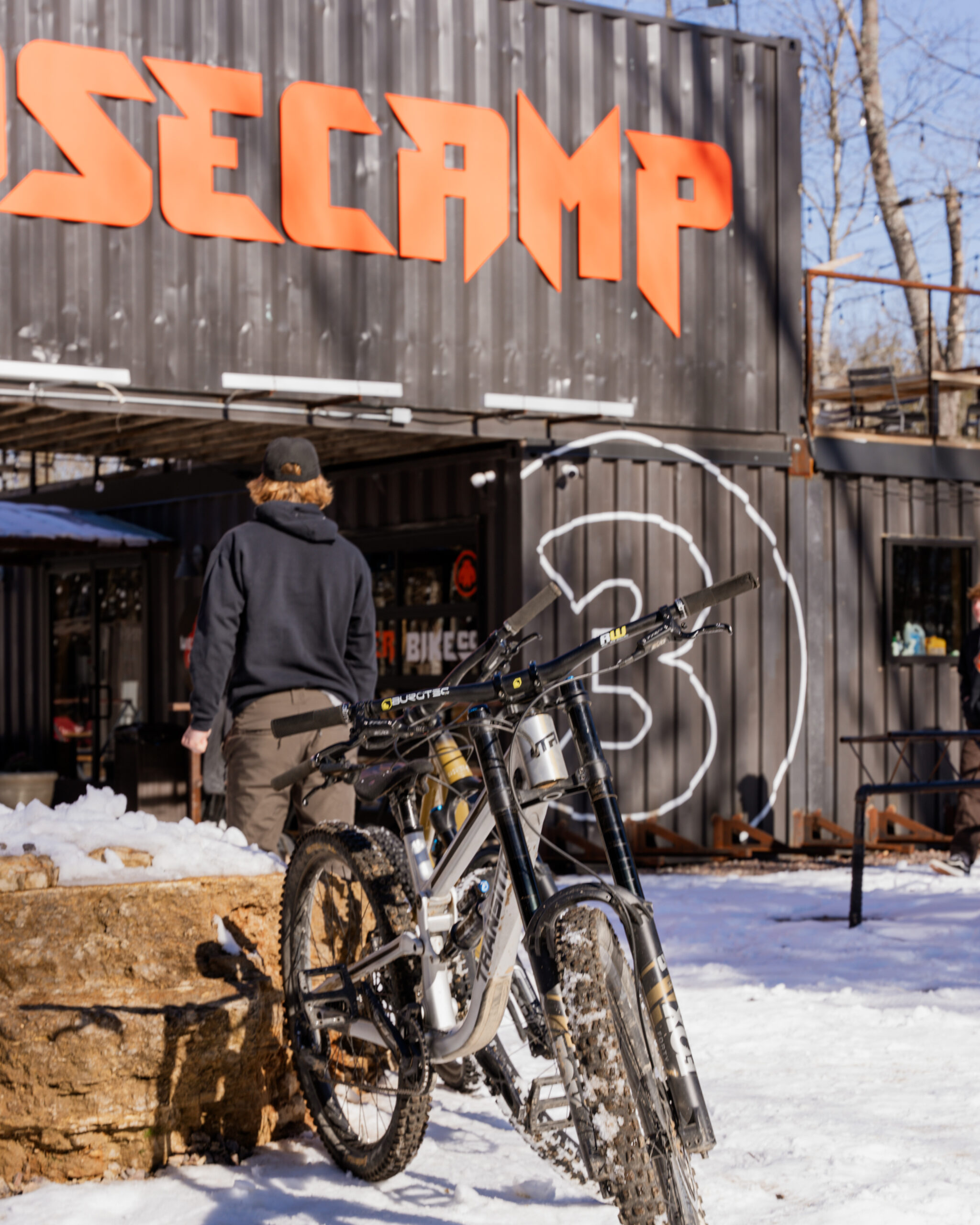
Winter may bring cold temperatures and shorter days, but that doesn’t mean your mountain biking skills have to hibernate. Whether you’re braving the outdoors or training inside, staying active during the off-season ensures you’ll be ready to hit the trails full throttle when spring arrives. Here’s how to maintain your strength, endurance, and technical skills all winter long.
Indoor Training: How to Stay in Shape When the Trails are Frozen
Use an Indoor Trainer or Smart Bike
If riding outside isn’t an option, an indoor trainer is a great way to keep your legs spinning. A smart trainer paired with apps like Zwift or TrainerRoad can simulate real-world terrain and keep your workouts engaging. Focus on high-intensity intervals (HIIT) to build endurance and strength for long trail rides.
Strength Training for Power and Stability
Mountain biking demands more than just leg power. A strong core, stable shoulders, and explosive strength in your legs are crucial for control and performance. Incorporate exercises like:
-
Squats and lunges – Strengthen quads and glutes for powerful pedaling.
-
Deadlifts – Build posterior chain strength for endurance.
-
Planks and Russian twists – Improve core stability for better bike handling.
-
Push-ups and pull-ups – Strengthen upper body muscles for controlling the bike.
Flexibility and Mobility Work
Tight muscles can limit movement and lead to injuries on the trail. Spend time on dynamic stretching, yoga, and foam rolling to improve flexibility and keep your joints healthy.
Balance and Coordination Drills
Biking requires precise body control and balance. Try single-leg exercises, stability ball drills, or even practicing on a balance board to improve coordination and reaction time.
Outdoor Training: Keep the Wheels Turning
Fat Biking for Snowy Trails
If your area gets snow, fat biking is a fantastic way to stay active and experience trails in a whole new way. These bikes have wide, grippy tires designed to handle snowy and icy terrain, keeping your riding skills sharp year-round.
Cold-Weather Mountain Biking Tips
Riding in winter conditions can be challenging but rewarding. Here’s how to stay comfortable:
-
Dress in layers – A moisture-wicking base layer, insulating mid-layer, and windproof outer shell will keep you warm without overheating.
-
Use winter-ready tires – Opt for studded or softer-compound tires to maintain grip on icy or wet surfaces.
-
Protect your hands and feet – Thermal gloves and insulated shoe covers help prevent numb fingers and toes.
Trail Running and Hiking for Endurance
If the trails are too messy for riding, trail running or hiking is an excellent alternative. It builds endurance, strengthens stabilizing muscles, and keeps you connected to nature.
If mountain biking conditions are rough, road or gravel riding can keep your endurance high. These rides help build a strong aerobic base that will transfer directly to trail riding.
Stay Ready for Spring
Winter training doesn’t have to be a chore. Mix up your routine, challenge yourself, and have fun with new ways to stay active. When the trails at Howler Bike Park dry out and the sun starts shining, you’ll be ready to send it full speed ahead.
Want to put your off-season training to the test? Plan your first ride back at Howler this spring—we’ll see you on the trails!
